Table of contents
Using Notifications in your workspace.
Tuesday March 26, 2024-7 min readNotifications are used as the global messaging system within Appward. Notifications are created each time someone mentions you (ie. @ symbol) in a app post, or whenever an app wants to send you a message. Although there is an independent Notifications app, the most common way to view your notifications is by using the Notifications flyout in the side-dock of your Workspace.
By clicking the bell icon, you’ll be shown the list of all incoming notifications from your colleagues and from specific apps in the platform. Notifications not only show you who is talking to you in the platform, but they can be used to quickly view the posts within app records and forums without having to go to the app. Lastly, when a post comes from an app record, you can use the notification itself to quickly jump to the app and app record to see the context of what’s being discussed. We call this “jumping to the front lines”.
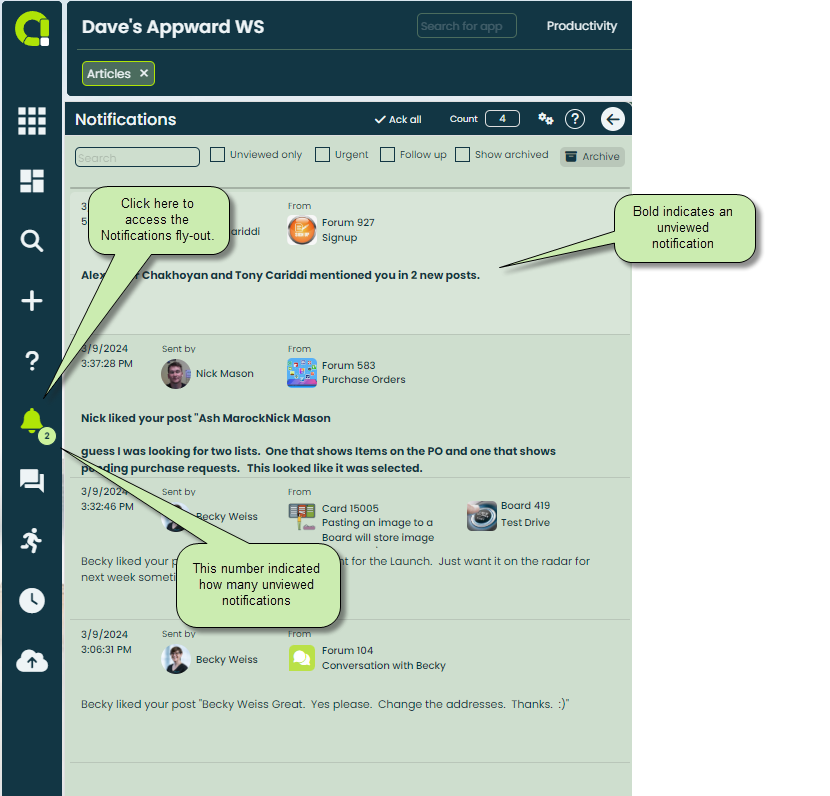
Viewing discussion threads
Most notifications will come from discussion posts in apps where a colleague has mentioned you (@ mention) or has liked a post of yours. When a notification is created by a post, you can click on the notification and see the discussion thread for specific app record. You can also respond using the Add Post button.
Below, you can see that Dave was notified that Rene liked and mentioned Dave in a private chat forum. Upon clicking the notification, the screen expands and shows the forum and discussion. The green highlights are showing new content that is targeted at Dave.
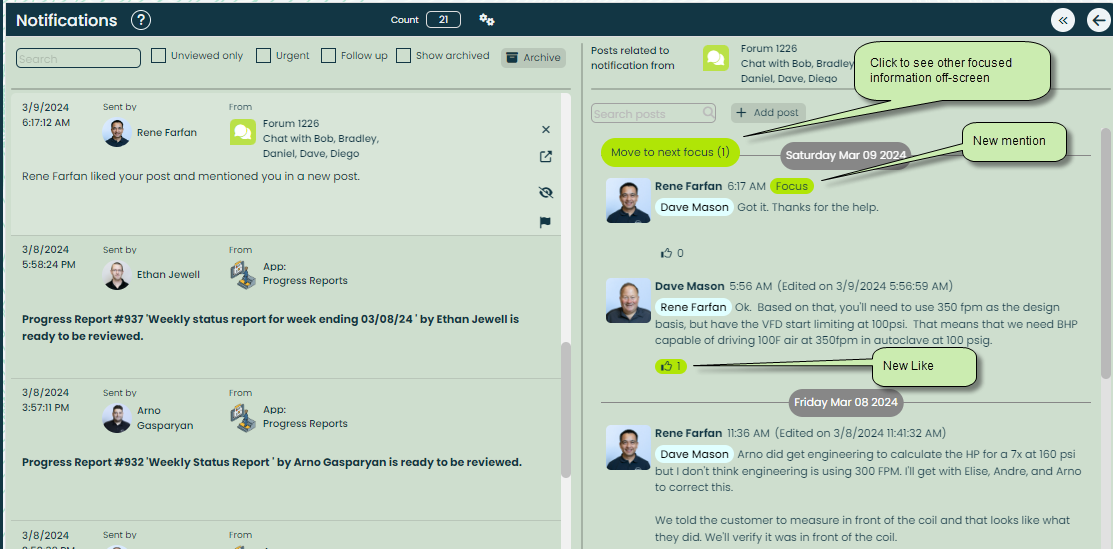
Posting in a discussion
You can post using “Add Post” button, or by clicking the Reply icon in a specific post.
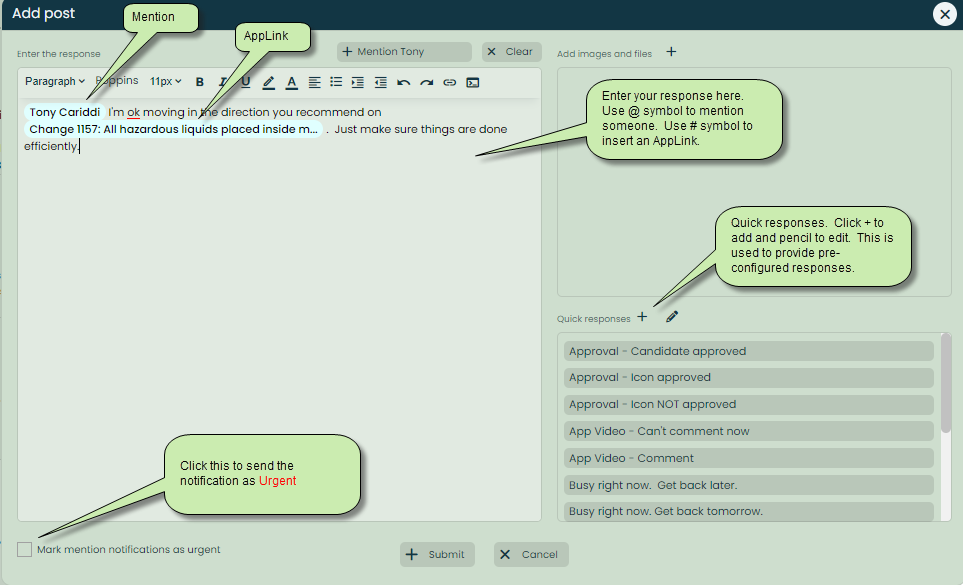
When you type the @ symbol, you will be able to select from a list of Users in your organization.
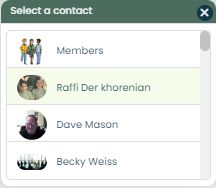
When you type the # symbol, you can include an AppLink ™ in your post. This lets allows other users to jump to the specific record and see the context. You can include multiple AppLinks in a post.
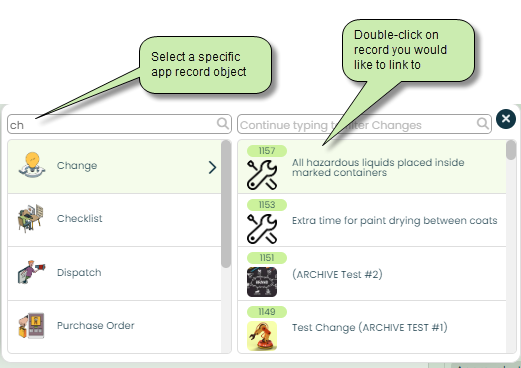
Details of notification
The notification includes the date, the sender, and information about the app and record that sent it. The sender can be an Appward user in your organization, or in certain cases it can be the Appward server sending you a message (ie. event-based notifications).
When a notification comes from an app, you’ll see the app’s record name (ie. Card), the ID of that record, and a title or name. If the specific record is a child of another parent record (ie. Boards->Card), then the parent information will be provided.
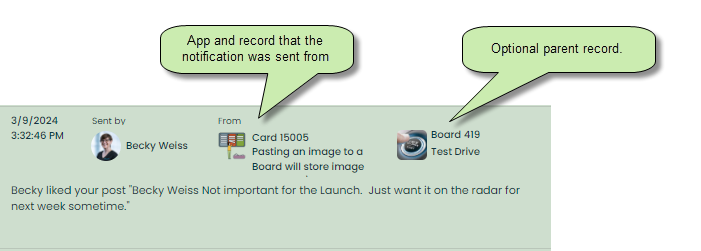
You can use the following buttons on each notification.
 – Archive the notification.
– Archive the notification.
 – Click to jump to the app and record (same as double-clicking the notification)
– Click to jump to the app and record (same as double-clicking the notification)
 – Set a previously viewed notification as unviewed (this will return it to bold).
– Set a previously viewed notification as unviewed (this will return it to bold).
 – Ability to mark the notification as Urgent or Followup.
– Ability to mark the notification as Urgent or Followup.

Followup – If you want to get back to a notification, set it for followup and it will not move when archiving you current list.

Urgent – when posting and mentioning a colleague, you can request that the post be urgent. In this case, the notifications will show an urgent label.

Filters and controls
Here’s some information on the different control elements on the screen.

Search – use this to filter the notification or archive list and locate specific notifications. The filter will search message, sender, record ID, record name, and parent name.
Unviewed only – check this to show only unviewed (ie. bold) notifications
Urgent – show only notifications marked as urgent
Follow up – show only notifications marked as followup.
Show archived – show the list of archived notifications
Archive button – click this to move all viewed notifications to Archive. It is recommended to archive after viewing your notifications to keep your immediate list small and manageable. Note: This will not move unviewed elements, nor elements that have been marked as followup.
 – Settings will expose the settings popup, where you can control how the notification flyout is displayed and whether a sound should occur on new notifications.
– Settings will expose the settings popup, where you can control how the notification flyout is displayed and whether a sound should occur on new notifications.
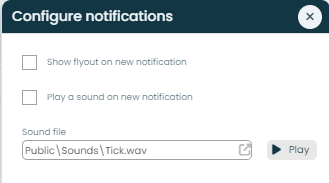
 – click to view this help information.
– click to view this help information.
